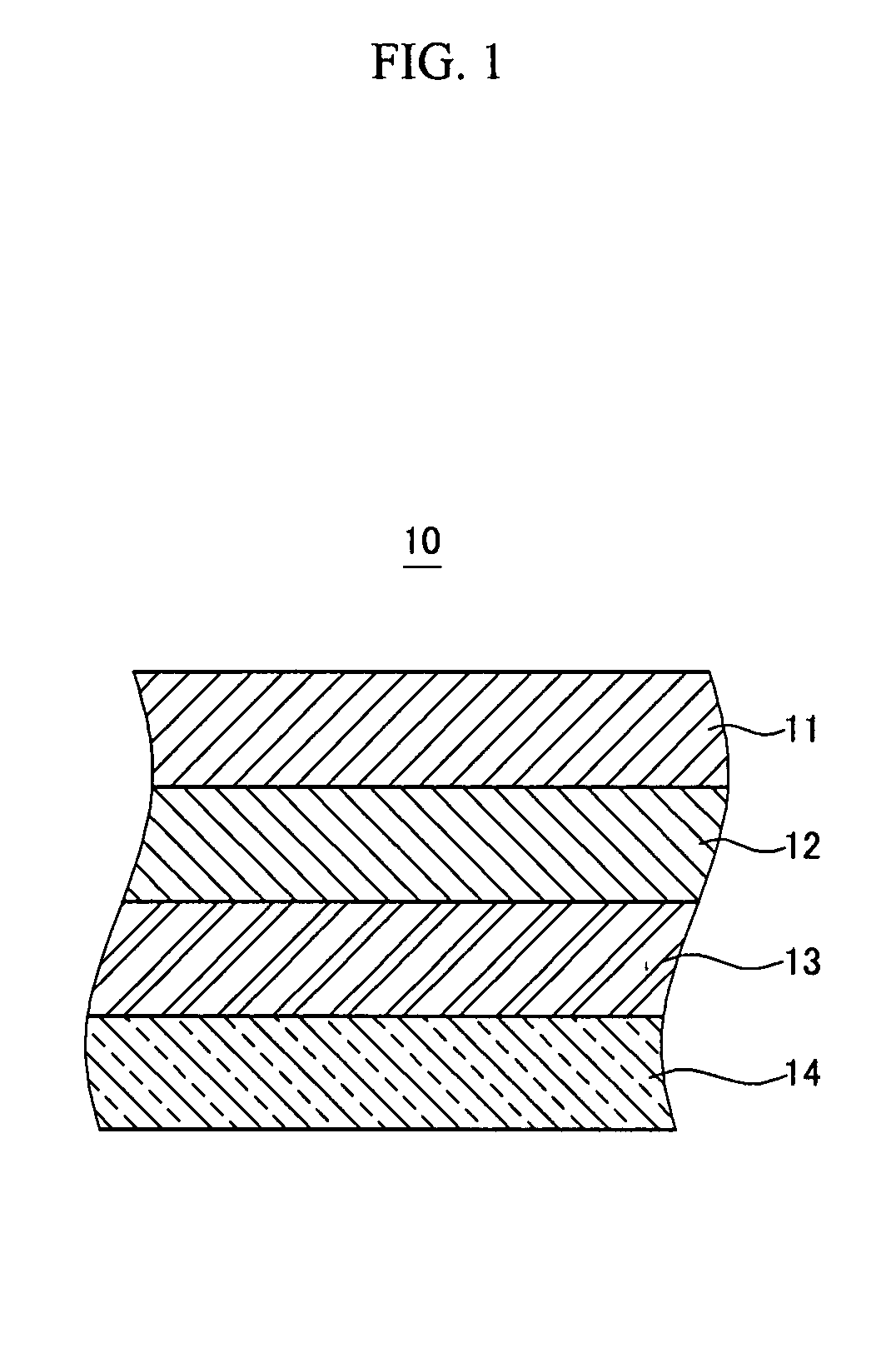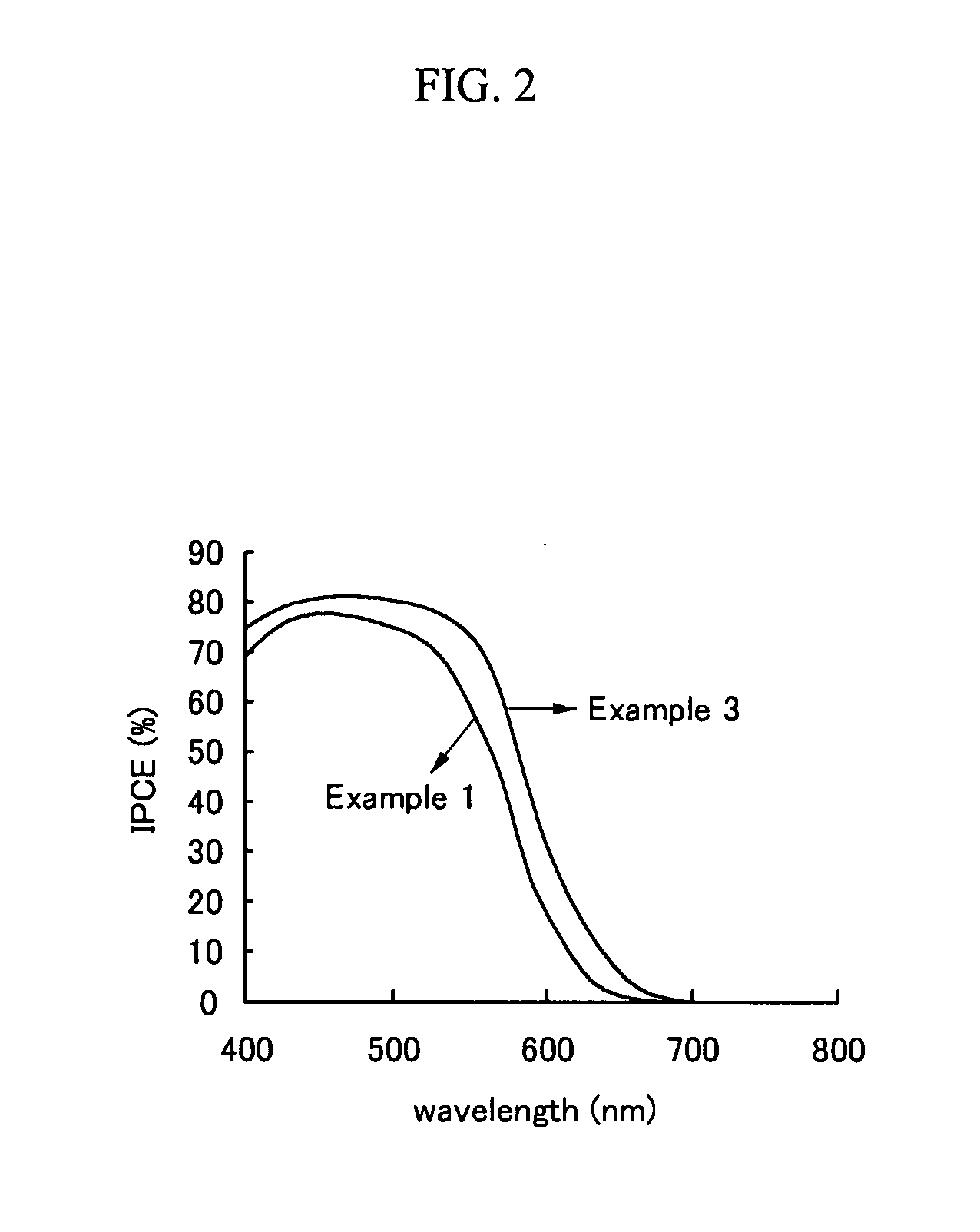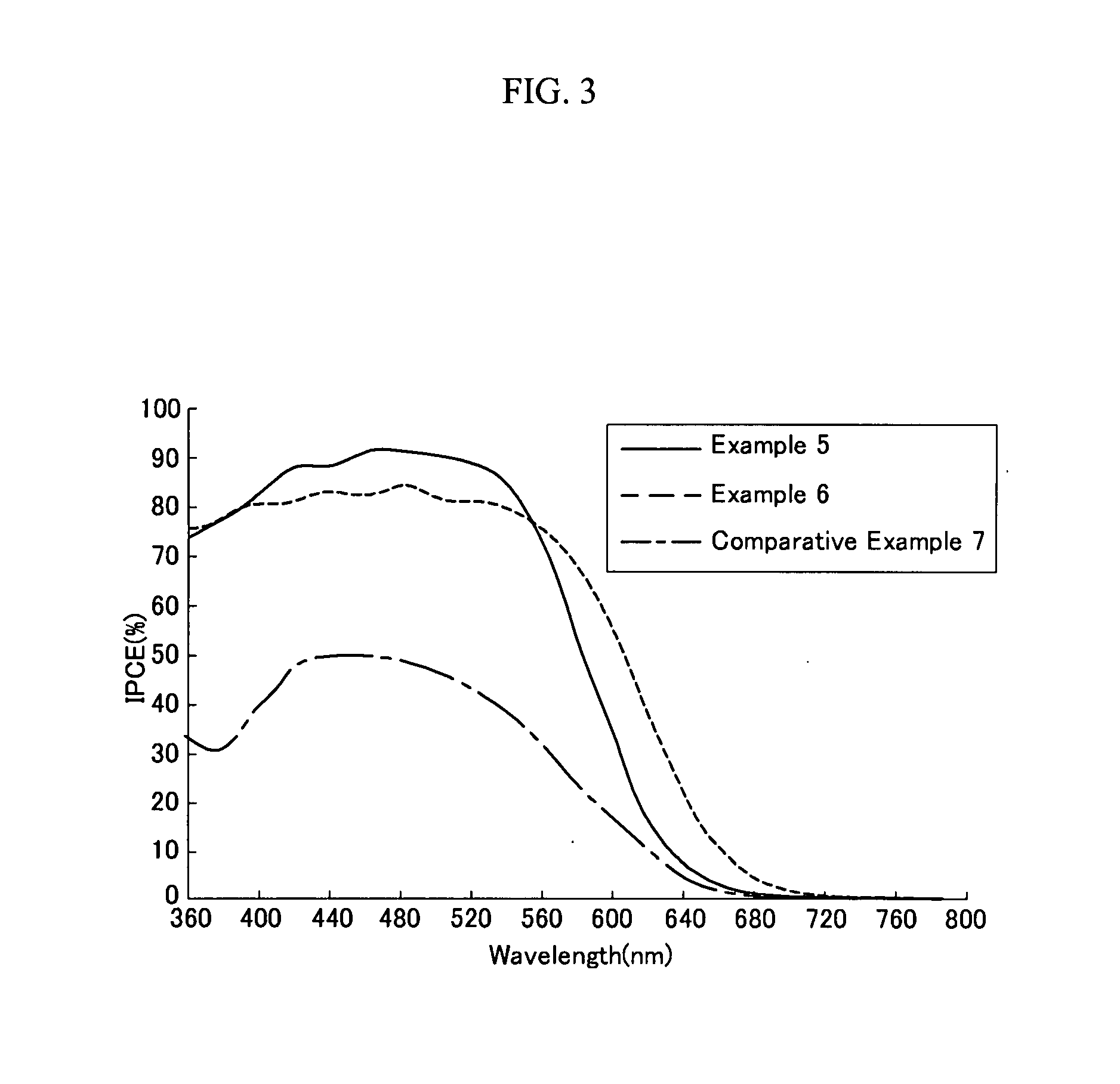Dye for dye-sensitized solar cell, and solar cell prepared from same
a solar cell and dye sensitization technology, which is applied in the field of dye sensitization for dye sensitized solar cells prepared from the same, can solve the problems of improving cell efficiency, difficult to practically use si solar cells, and limited application of dye sensitized solar cells for practical use, so as to achieve the effect of improving photoelectric efficiency
- Summary
- Abstract
- Description
- Claims
- Application Information
AI Technical Summary
Benefits of technology
Problems solved by technology
Method used
Image
Examples
example 1
Fabrication of a Dye-Sensitized Solar Cell
[0148]A dye (5) was synthesized in accordance with the following Reaction Scheme 1. Referring to Reaction Scheme 1, the synthesis of the dye (5) will be described in more detail. iodine, periodic acid, distilled water, sulfuric acid, and acetic acid were added to fluorene (Aldrich Company, St. Louis, Mo.) and then reaction was performed at 90° C. until an iodine color in the resulting the mixed solution disappeared. After the reaction was complete, an excessive amount of distilled water was added to the mixed solution which was then filtered using a Buchner funnel. The filtrate was rinsed with water and dried. A small amount of acetone was added to the dried product and maintained at a low temperature to obtain pale yellow 2-iodo-9-fluorene (5a). [0148] Then, tetrahydrofuran was added to the prepared 2-iodo-9-fluorene (5a), and thereafter potassium tertiary butoxide was slowly added to the resulting mixture at 0° C. and iodomethane (Aldrich ...
example 2
Fabrication of a Dye-Sensitized Solar Cell
[0156]As shown in the following Reaction Scheme 2, a tetrakis (triphenyl phosphine) catalyst was added to the N,N-bis(9,9-dimethylfluorene-2-nyl)-4-bromoaniline (5c) according to Example 1, and tetrahydrofuran was added to 2,2′-bithiophene (Aldrich Co.). Then, normal butyllithium was added to the resulting mixture at −78° C., preparing a mixed solution. The mixed solution was maintained at room temperature, and trimethylborate (Aldrich Co.) was added thereto. Hydrated 5-{2,2′-bithiophene}boric acid) (5f) aqueous solution was added thereto. The resulting mixed solution was maintained at 90° C. for 15 hours. The mixed solution was cooled to room temperature, and after its solvent was all removed, it was separated by using chromatography, obtaining a light yellow solid, 2-[N,N-bis (9,9-dimethylfluorene-2-nyl)phenyl]-5,5′-bithiophene 5g. Herein, an eluent was prepared by mixing ethylene acetate and hexane in a volume ratio of 1:10.
[0157]Then, di...
example 3
Fabrication of Dye-Sensitized Solar Cell
[0160]A dye-sensitized solar cell was fabricated according to the same method as in Example 1, except that 5 mM deoxycholic acid of the following Formula 12 was further added to the dye dispersion.
PUM
| Property | Measurement | Unit |
|---|---|---|
| particle diameter | aaaaa | aaaaa |
| thickness | aaaaa | aaaaa |
| average particle diameter | aaaaa | aaaaa |
Abstract
Description
Claims
Application Information
 Login to View More
Login to View More - R&D
- Intellectual Property
- Life Sciences
- Materials
- Tech Scout
- Unparalleled Data Quality
- Higher Quality Content
- 60% Fewer Hallucinations
Browse by: Latest US Patents, China's latest patents, Technical Efficacy Thesaurus, Application Domain, Technology Topic, Popular Technical Reports.
© 2025 PatSnap. All rights reserved.Legal|Privacy policy|Modern Slavery Act Transparency Statement|Sitemap|About US| Contact US: help@patsnap.com



